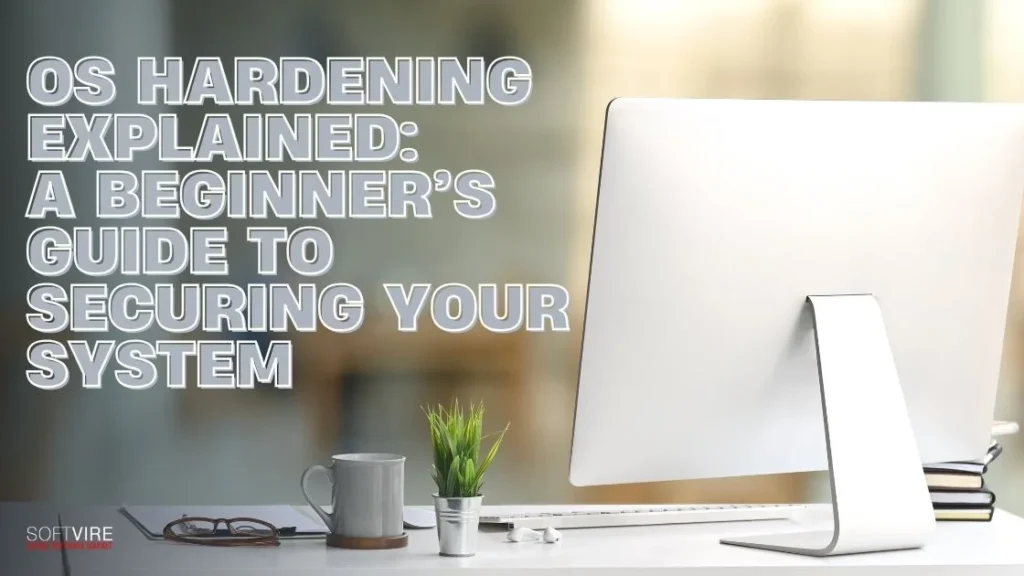In a world where cyber threats are becoming increasingly sophisticated, it is not only a good idea but also imperative to secure your operating system (OS). Understanding OS hardening is an initial step in constructing a robust defense, regardless of whether you are responsible for administering a business network or merely seeking to enhance the security of your personal computer.
As the name indicates, this process entails “Hardening” a device against cyberattacks and boosting its defenses against various security vulnerabilities.
This article thoroughly introduces system hardening to lessen the danger profile and safeguard your networks, hardware, and precious data.
What is OS Hardening?
Operating system (OS) hardening, a subset of system hardening, is the application of security measures and patches to operating systems such as Windows, Linux, or Apple OS X to enhance their resilience against assaults. The objective is to safeguard sensitive computer systems by minimizing the attack surface to mitigate the risk of data breaches, unauthorized access, system hacking, or infection.
How Does System Hardening Reduce the Attack Surface?
The “attack surface” is all the vulnerabilities threat actors may use to hack a device, system, or network. System hardening reduces vulnerabilities and attack surfaces.
Multiple techniques may cause vulnerabilities. An attacker may exploit unpatched firmware and software. Hacked passwords, default passwords, and plaintext credentials may also generate an attack surface.
Other standard security holes are data that is not encrypted. At the same time, it is being stored or network traffic that is not encrypted, access controls that are missing or not set up correctly, and BIOS, ports, servers, firewalls, routers, switches, or any other part of the infrastructure that is not set up correctly. By finding and fixing these weaknesses, system hardening reduces and, ideally, eliminates the system’s attack area.
Different Types of System Hardening
Operating system hardening is one of the various system-hardening techniques essential to protecting your company against attacks. Simply put, system hardening entails locating and addressing possible security flaws throughout your company. It consists of:
- Software hardening: Application hardening involves implementing security best practices to safeguard apps deployed on your server.
- Server hardening: This procedure safeguards a server’s data, components, operations, and rights by implementing security measures across software and hardware.
- Database hardening involves securing the database you store and manage by controlling access, encrypting information, and turning off unnecessary database services.
- Network hardening: Protecting the communication infrastructure servers and computer systems rely on for their functioning involves adopting security measures.
How to Harden an Operating System
Implementing updates released by OS developers frequently
Software often harbors security deficiencies and vulnerabilities. Owners often rectify issues via updates or patches in an iterative fashion.
Consequently, it is imperative that you consistently upgrade your operating system to reduce risks. Verify if your operating system automatically downloads security updates; if it does not, adjust the settings accordingly.
To ensure that you update your OS regularly, keep two things in mind:
- Updating service packs with the newest version is crucial for decreasing security threats.
- Manage your program’s patches: These are remedies for security holes in your software. By constantly monitoring and testing the system, you can guarantee its strength.
Removing unnecessary drivers
Operating systems automatically install drivers when connecting a device to a computer or laptop. However, drivers may not always be terminated when the device is removed. Software is no exception; in many cases, software drivers will continue functioning even after removing the program from your computer.
These hidden, outdated, and inactive drivers not only slow down your system and increase the likelihood of driver conflicts down the road, but they also leave it vulnerable to assaults. Potentially harmful actors might access your system via the company’s network. Removing drivers is immediately necessary if you detach a device or delete software.
Limiting and authenticating system access permissions
As a general guideline, access control mechanisms should be used to protect files, networks, and other system assets. Although all operating systems, including Linux and Windows, include strong access control features, developers often neglect to include the security layer.
However, ensuring effective access control management is one of the first security practices you must follow. Also, follow the principle of least privilege when configuring the controls, providing access only to those who need it and when they need it, so you know who is accessing what resources.
Encrypting the HDD or SSD that stores and hosts your OS
To protect your data and operating system, you must install encryption software on any storage device, whether an HDD (hard disc drive) or an SSD (solid-state drive). When you use hard-drive encryption, your file is automatically encrypted, and the program will decode it when you access it. By using simple encryption and decryption techniques, you may achieve more data security concealed from everyone.
Use hardening frameworks for extra access control.
Operating systems often provide frameworks that offer additional security and access control for your system. Frameworks such as AppArmor and SELinux protect the system against attacks such as buffer overflow and code injection. When you install these tools, you will automatically adopt all the best practices designed to strengthen your system.
Use hardening frameworks for extra access control.
Operating systems often provide frameworks to add an extra security and access control layer. Frameworks like AppArmor and SELinux safeguard the system against attacks like buffer overflow and code injection. Installing these tools allows you to implement all the best practices to harden your system automatically.
How to Harden Windows 11 Pro: A Practical Approach
If you’re using Windows 11 Pro, you already have access to a suite of built-in tools designed for system security. Here’s how to use them to your advantage.
Use BitLocker Drive Encryption
BitLocker protects your data by encrypting the entire drive. Even if someone gains physical access to your machine, they won’t be able to read your data without the encryption key.
- Go to Settings > Privacy & security > Device Encryption.
- Enable BitLocker for all critical drives.
Windows Defender Antivirus
Windows 11 Pro comes with Microsoft Defender Antivirus, which provides real-time protection against viruses, malware, and spyware.
- Ensure real-time protection is enabled.
- Perform regular scans or schedule them during off-hours.
- Use Defender Application Guard for secure browsing.
Windows Hello and Biometric Authentication
Strong passwords are great—but multi-factor and biometric authentication are better.
- Set up Windows Hello for fingerprint, facial recognition, or PIN-based logins.
- Combine it with a secure password for layered protection.
Controlled Folder Access
This feature helps prevent ransomware from accessing and encrypting your files.
- Navigate to Windows Security > Virus & threat protection > Manage ransomware protection.
- Enable Controlled folder access and select the folders you want to protect.
Hardware-Based Security: TPM 2.0 and Secure Boot
Windows 11 Pro leverages TPM 2.0 (Trusted Platform Module) and Secure Boot to ensure your system boots securely and hasn’t been tampered with.
- Check BIOS/UEFI settings to confirm Secure Boot is enabled.
- Ensure TPM is active and working (found under Device Security in Windows Security).
Group Policy Editor and Local Security Policies
Windows 11 Pro gives you access to advanced configuration through Group Policy Editor and Local Security Policy, ideal for fine-tuning OS hardening.
- Limit access to the Control Panel or Task Manager.
- Set account lockout policies after failed login attempts.
- Configure automatic logoff for idle sessions
Final Thoughts
OS hardening is not only for computer specialists; it is a fundamental step anybody can take to improve their digital security. Whether you’re a company owner, an IT administrator, or a security-conscious consumer, securing your operating system provides a better defense against cyber attacks.
Windows 11 Pro security features provide many necessary tools. All it takes is practice and knowledge of how to use them correctly. Hardening your system is one of the finest ways to ensure digital safety. So don’t put it off any longer, visit us today at the Softvire Global Market for more tips and information.



